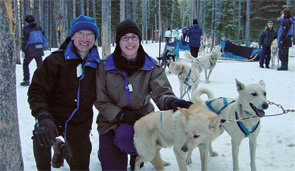“On Unpaved Territory”
Dr. Siegel employed his conversance with statistics during the pivotal Early Rheumatic Disease trial of etanercept in the late 1990s. He suggested ways to structure the trials to reduce the risk of bias due to missing data. Previously, trials had as much as one-third missing X-ray data; subsequently, trials had consistently less than one-fifth and sometimes as little as one-tenth missing data. Dr. Siegel also recommended provisions to reduce bias by having readers score films (assign a Sharp Score) in a manner blinded to chronologic order, and then re-sort the films so that the agency could see them in the order they were taken. Barbara Finck, MD, currently chief medical officer of Osprey Pharmaceuticals in San Francisco, was then the lead rheumatologist at Immunex. “Dr. Siegel doesn’t compromise safety,” says Dr. Finck, “but at the same time, he acknowledges that you cannot develop a cutting-edge drug with old technologies or old endpoints. Many times when you’re working in new areas of research, you are on unpaved territory.”
Daniel J. Lovell, MD, MPH, director of rheumatology, and Joseph E. Levinson Professor of Pediatrics, Cincinnati Children’s Hospital Medical Center, has been particularly appreciative of the way in which Dr. Siegel has “led the charge” in pediatric rheumatology since the FDA has applied the 1998 Pediatric Final Rule. “Jeff has been the point person for application of this rule, using their increased authority at the FDA in a way to best serve children. This was a heavy responsibility—if they had been too rigorous about it and too demanding, the bottom line was that companies would not have done studies. If they had been too easy and permissive, then drugs could have potentially been approved without adequate information about efficacy and safety. And the people who have benefited are the kids with arthritis, who now have several approved treatment options.”
Along with his colleague from Cincinnati Children’s Hospital Medical Center, Edward Giannini, MD, Dr. Lovell served with the Pediatric Rheumatology Collaborative Study Group, working with Dr. Siegel on adequate definitions of flare when it came time for the design of pediatric trials for Enbrel. “This was very much a working collaboration of people trying to do the best thing. There wasn’t any posturing, and it was very refreshing, very gratifying, and very effective,” recalls Dr. Lovell.

Working with an FDA biostatistician and other collaborators, Dr. Siegel conceived a novel three-stage clinical trial design to increase the power of the trial in children with juvenile idiopathic arthritis and other orphan diseases. “The idea was to study the same patient multiple times to learn whether the drug works or not,” Dr. Siegel explains. The trial begins as a randomized controlled trial, with half of study participants receiving the test drug and half the placebo. Patients who respond to the drug are then randomized to either drug or placebo; flares would be expected more frequently in the latter group, providing a second, separate way of learning whether the drug was effective. Finally, patients who were originally randomized to placebo would be put on the drug and then randomized to either stay on the drug or be withdrawn. Again, if the latter patients experienced more flares when withdrawn to placebo, this would offer a third way of determining whether the drug worked.

